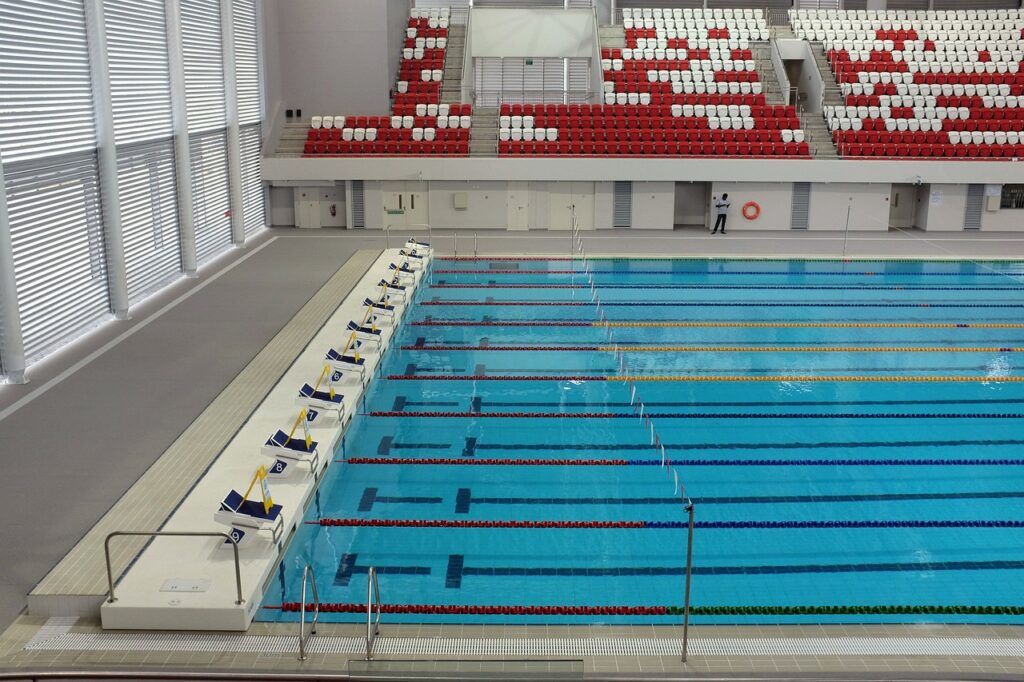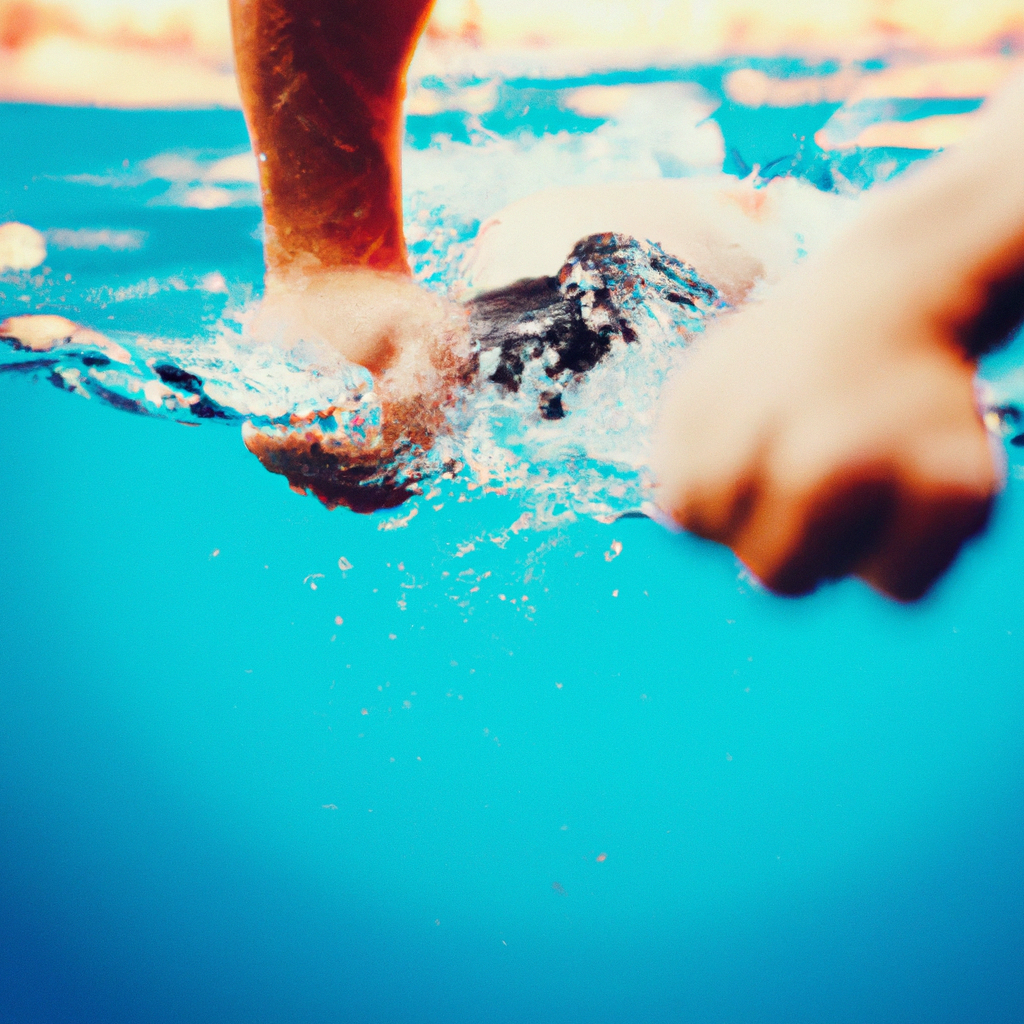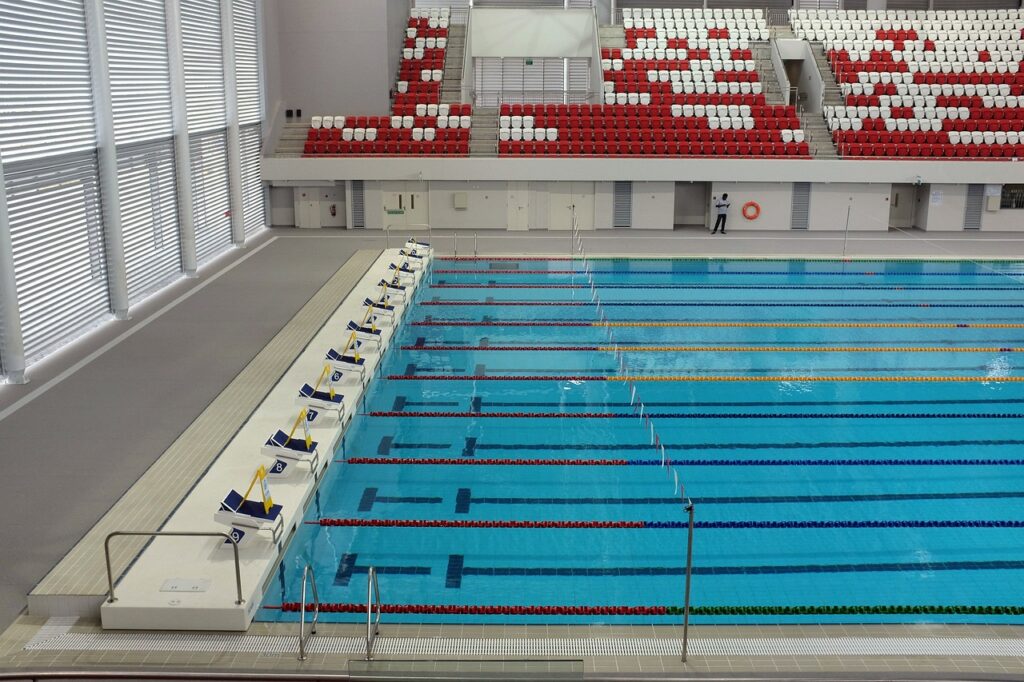Are you tired of the same old workout routine and looking for a fun and effective way to shed those extra pounds? Look no further than the refreshing embrace of water where you can dive into fat loss and swim your way to a leaner body! Swimming is not only an exhilarating activity that cools you off on a hot summer day, but it also offers a myriad of benefits for your physical and mental well-being. Whether you’re a water baby or a beginner, swimming is an excellent full-body workout that torches calories, tones muscles, and improves cardiovascular health. So grab your swimsuit and jump in, because the pool is calling your name and waiting to transform your fitness journey into a splashing success!
Benefits of Swimming for Fat Loss
Cardiovascular Workout
Swimming is an excellent cardiovascular exercise that can help you burn fat and lose weight effectively. When you swim, you engage your entire body, utilizing both your upper and lower muscles. This full-body workout elevates your heart rate, increasing the circulation of oxygen and nutrients throughout your body. Over time, consistently swimming for fat loss can improve your cardiovascular fitness, strengthen your heart muscles, and lower your risk of heart disease.
Low Impact Exercise
One of the major advantages of swimming for fat loss is that it is a low impact exercise. Unlike activities such as running or jumping, swimming puts minimal stress on your joints, making it ideal for those who may have joint pain or are recovering from an injury. The buoyancy of the water supports your body, reducing the risk of impact-related injuries. This makes swimming a fantastic option for individuals of all fitness levels, including those who may be overweight or have mobility limitations.
Total Body Workout
Swimming is a total-body workout that engages various muscle groups simultaneously. As you glide through the water, your arms, shoulders, back, chest, and core all work together to propel you forward. Additionally, your legs are constantly kicking to provide propulsion, which helps strengthen your lower body muscles. This holistic approach to exercise ensures that you target multiple muscle groups with every stroke, allowing you to sculpt and tone your entire body while shedding excess fat.
Increased Metabolism
Swimming for fat loss can also help boost your metabolism. When you swim, your body works hard to regulate its temperature, resulting in an increase in your metabolic rate. This means that even after you finish your swim session, your body continues to burn calories as it works to restore normal metabolic functions. Additionally, swimming builds lean muscle mass, which further contributes to a higher resting metabolic rate. The more muscle you have, the more calories you burn even at rest, making swimming an effective long-term strategy for fat loss.
Stress Relief
Swimming is not only a physical workout but also a mental escape. The repetitive nature of swimming, coupled with the calming sensation of being in the water, can be incredibly soothing. As you glide through the pool, you can let go of daily stresses and focus on the rhythmic motion of your strokes. The tranquil environment of swimming can help reduce anxiety, alleviate stress, and promote overall mental well-being. By incorporating swimming into your fat loss routine, you can find a healthy outlet to unwind and relax, making it easier to stay motivated on your weight loss journey.
Swimming Techniques for Fat Loss
Freestyle
Freestyle, also known as front crawl, is one of the most popular swimming strokes for fat loss. It involves alternating arm movements in coordination with a flutter kick. The continuous movement of your arms and legs increases your heart rate, allowing you to burn calories and fat effectively. Freestyle is also an excellent stroke for improving cardiovascular endurance and developing upper body strength.
Backstroke
Backstroke is another effective swimming technique for fat loss. As the name suggests, you swim on your back while performing alternating arm movements and a flutter kick. Backstroke engages your back, shoulders, and arms, helping to tone and strengthen these respective muscle groups. It is also a great option for those who may have difficulty with breathing techniques in other strokes, as the face remains out of the water throughout the entire stroke.
Breaststroke
Breaststroke is a slower-paced swimming stroke compared to freestyle or backstroke, but it is still an effective technique for fat loss. Breaststroke involves a symmetrical movement of both arms and legs, resembling a frog-like motion. This stroke targets your chest, triceps, and inner thighs, helping to tone and define these areas. Breaststroke is also known for its ability to improve lung capacity and enhance overall coordination.
Butterfly Stroke
The butterfly stroke is an advanced swimming technique that requires strength, coordination, and agility. It involves a simultaneous movement of both arms and a dolphin kick. The butterfly stroke is an intense full-body workout that engages your chest, shoulders, back, and core muscles. While it may not be suitable for beginners, incorporating butterfly into your swimming routine can challenge your body and promote significant fat loss when performed correctly.


How to Structure a Fat Loss Swimming Routine
Warm-up and Stretching
Before diving into your swim workout, it is essential to warm up your muscles and prepare your body for the physical activity ahead. A dynamic warm-up that involves light cardio exercises, such as jogging or jumping jacks, can help increase blood flow, loosen up your joints, and improve your overall flexibility. After the warm-up, do some stretching exercises to further enhance your range of motion and prevent injury.
Interval Training
Interval training is a highly effective method for fat loss and can be incorporated into your swimming routine. Alternate between high-intensity bursts and recovery periods to challenge your body and keep your heart rate elevated throughout the workout. For example, you can perform a fast lap followed by a slower-paced lap to catch your breath. This interval training method not only burns calories during the workout but also continues to torch them even after you finish swimming.
Endurance Training
Endurance training focuses on building stamina and increasing your overall swimming distance. It involves maintaining a moderate intensity for an extended period, gradually increasing the time or distance covered with each session. Endurance training is beneficial for fat loss as it allows you to swim for more extended periods, resulting in more calories burned. This type of training also helps improve cardiovascular fitness and strengthens your muscles.
Cool Down
After completing your swim workout, it is crucial to cool down properly to gradually bring your heart rate back to its resting state. Swim a few laps at a slower pace to help flush out lactic acid buildup and prevent muscle soreness. Once you have completed your cool-down swim, take some time to stretch your muscles again. Cooling down and stretching after swimming can aid in muscle recovery and flexibility, reducing the risk of injuries.
Nutrition for Fat Loss and Swimming
Calorie Intake
To achieve fat loss through swimming, it is essential to maintain a calorie deficit. This means consuming fewer calories than your body needs to maintain its current weight. However, it is crucial to strike a balance to ensure you have enough energy for your swim workouts. Consult with a nutritionist or dietitian to determine the appropriate calorie intake for your individual needs, taking into account your activity level, height, weight, and overall goals.
Balanced Diet
While swimming can significantly contribute to fat loss, it is crucial to support your workouts with a balanced and nutritious diet. Include a variety of whole foods such as fruits, vegetables, lean proteins, whole grains, and healthy fats in your meals. Opt for nutrient-dense foods that provide the necessary fuel and nutrients for your body to perform optimally during your swim sessions.
Hydration
Staying hydrated is crucial for any fitness routine, including swimming for fat loss. Water is essential for regulating body temperature, lubricating joints, and transporting nutrients throughout your body. Before, during, and after your swim workouts, drink plenty of water to replenish any fluids lost through sweat. Remember to listen to your body’s thirst signals and aim to drink water consistently throughout the day.


Combining Swimming with Other Exercises for Fat Loss
Strength Training
Incorporating strength training alongside swimming can enhance your fat loss results. Strength training exercises such as weightlifting or bodyweight exercises help build lean muscle mass. This increase in muscle mass can boost your metabolism, allowing you to burn more calories even at rest. Focus on compound exercises that target multiple muscle groups, such as squats, lunges, push-ups, and rows, to maximize the benefits of strength training.
Circuit Training
Circuit training involves performing a series of exercises back-to-back with minimal rest in between. By combining cardiovascular exercises like swimming with strength training or bodyweight exercises, you create a high-intensity workout that promotes fat loss. Design your circuit training routine to target different muscle groups while keeping your heart rate elevated throughout the workout. This combination of strength and cardiovascular training can help you achieve your fat loss goals efficiently.
High-Intensity Interval Training
High-Intensity Interval Training (HIIT) is a popular exercise method for fat loss that can be incorporated alongside swimming. HIIT involves short bursts of intense exercise followed by brief recovery periods. For example, you can swim at maximum effort for 30 seconds, followed by a 20-second rest or slower-paced lap. Repeat this cycle multiple times during your swim workout. HIIT not only burns calories during the exercise but also increases your metabolism, allowing your body to continue burning calories long after the workout is over.
Common Mistakes to Avoid
Overeating
One common mistake individuals make when swimming for fat loss is overeating or rewarding themselves with unhealthy foods after a swim session. While swimming does burn calories, it is essential to maintain a balanced and calorie-controlled diet to see optimal fat loss results. Stay mindful of your portion sizes and choose nutrient-dense foods to fuel your body effectively.
Neglecting Rest Days
While swimming is a low impact exercise, your body still needs time to rest and recover. Neglecting rest days can lead to overtraining and an increased risk of injury. Incorporating rest days into your swimming routine allows your muscles to recover, repair, and grow stronger. Listen to your body and take breaks when needed to ensure a healthier and more sustainable approach to fat loss.
Poor Technique
Proper swimming technique is crucial not only for maximizing fat loss benefits but also for preventing injury. Without proper technique, you may not engage the correct muscles or efficiently move through the water, reducing the effectiveness of your swim workouts. Take the time to learn and master the correct swimming techniques for each stroke to ensure you are getting the most out of your fat loss swimming routine.
Lack of Variation
Repeating the same swimming routine over and over can lead to plateaus and decreased motivation. To prevent this, incorporate variation into your swimming workouts. Try different strokes, distances, and intensities to challenge your body and keep your workouts exciting. Additionally, consider joining swim classes or clubs to swim with others and explore new techniques. Adding variety to your swim routine will not only enhance your fat loss progress but also make your swimming experience more enjoyable.


Tips for Beginners
Start Slow
If you are a beginner swimmer, it is essential to start slow and gradually increase the intensity and duration of your swim workouts. Focus on mastering the basic techniques, such as freestyle and backstroke, before progressing to more advanced strokes. Starting slowly allows your body to adapt to the demands of swimming, minimizing the risk of injury and ensuring a more enjoyable experience.
Use Flotation Devices
For individuals who are not confident swimmers or are afraid of the water, using flotation devices such as kickboards or swimming noodles can be helpful. These devices provide additional buoyancy, making it easier to practice and improve your swimming techniques. As your confidence and skills increase, you can gradually reduce your reliance on flotation devices.
Take Lessons
Taking swimming lessons can significantly benefit beginners and individuals looking to refine their technique. Qualified instructors can teach you proper form, breathing techniques, and various swimming drills to enhance your fat loss swimming routine. Lessons can help build your confidence, correct any mistakes in your swimming technique, and ensure that you swim safely and efficiently.
Overcoming Challenges
Fear of Water
If you have a fear of water, it is understandable that swimming may seem daunting. Overcoming a fear of water requires patience and gradual exposure. Start by getting comfortable being in the water, gradually progressing from standing to floating with the aid of flotation devices. Consider seeking professional help, such as swimming instructors or therapists specialized in aquaphobia, to guide you through the process and help you conquer your fear.
Lack of Access to a Pool
For individuals who do not have access to a pool, finding alternative options for swimming can be challenging. Look for local community centers, gyms, or recreational facilities that offer swimming pool memberships or day passes. Additionally, you may consider joining a local swim club or looking for natural bodies of water, such as lakes or beaches, that allow swimming. If swimming is not feasible, you can still incorporate other cardiovascular exercises into your fat loss routine, such as running, cycling, or dancing.
Time Constraints
Finding time to swim regularly can be challenging, especially if you have a busy schedule. However, even a short swim session can be beneficial for fat loss. Look for opportunities to swim during your lunch break, early mornings, or evenings. Prioritize your swimming workouts by scheduling them into your calendar like any other appointment. Remember, consistency is key, so finding a routine that works for you is essential for long-term fat loss success.


Real-Life Success Stories
Personal Testimonials
Many individuals have seen significant fat loss results through swimming. Personal testimonials reveal inspiring stories of people who have embraced swimming as their primary exercise for weight loss. From shedding excess pounds to transforming their bodies, these success stories highlight the effectiveness of swimming for fat loss when done consistently and with determination.
Before and After Photos
Before and after photos can capture the powerful impact of swimming for fat loss. These visual representations showcase how swimming can lead to noticeable changes in body composition, including a reduction in body fat and an increase in lean muscle mass. Seeing the physical transformations of others can serve as motivation and inspiration for those embarking on their own fat loss swimming journey.
Conclusion
Swimming is an excellent and enjoyable way to achieve fat loss and improve overall fitness. With its numerous benefits, including cardiovascular workout, low impact nature, full-body engagement, increased metabolism, and stress relief, swimming offers a comprehensive approach to weight loss. By incorporating different swimming techniques, structuring a balanced routine, paying attention to nutrition, and combining swimming with other exercises, you can optimize your fat loss results. Remember to avoid common mistakes, seek beginner-friendly tips, overcome challenges, and draw inspiration from real-life success stories. So dive into the world of swimming and allow it to propel you towards a leaner and healthier body!





